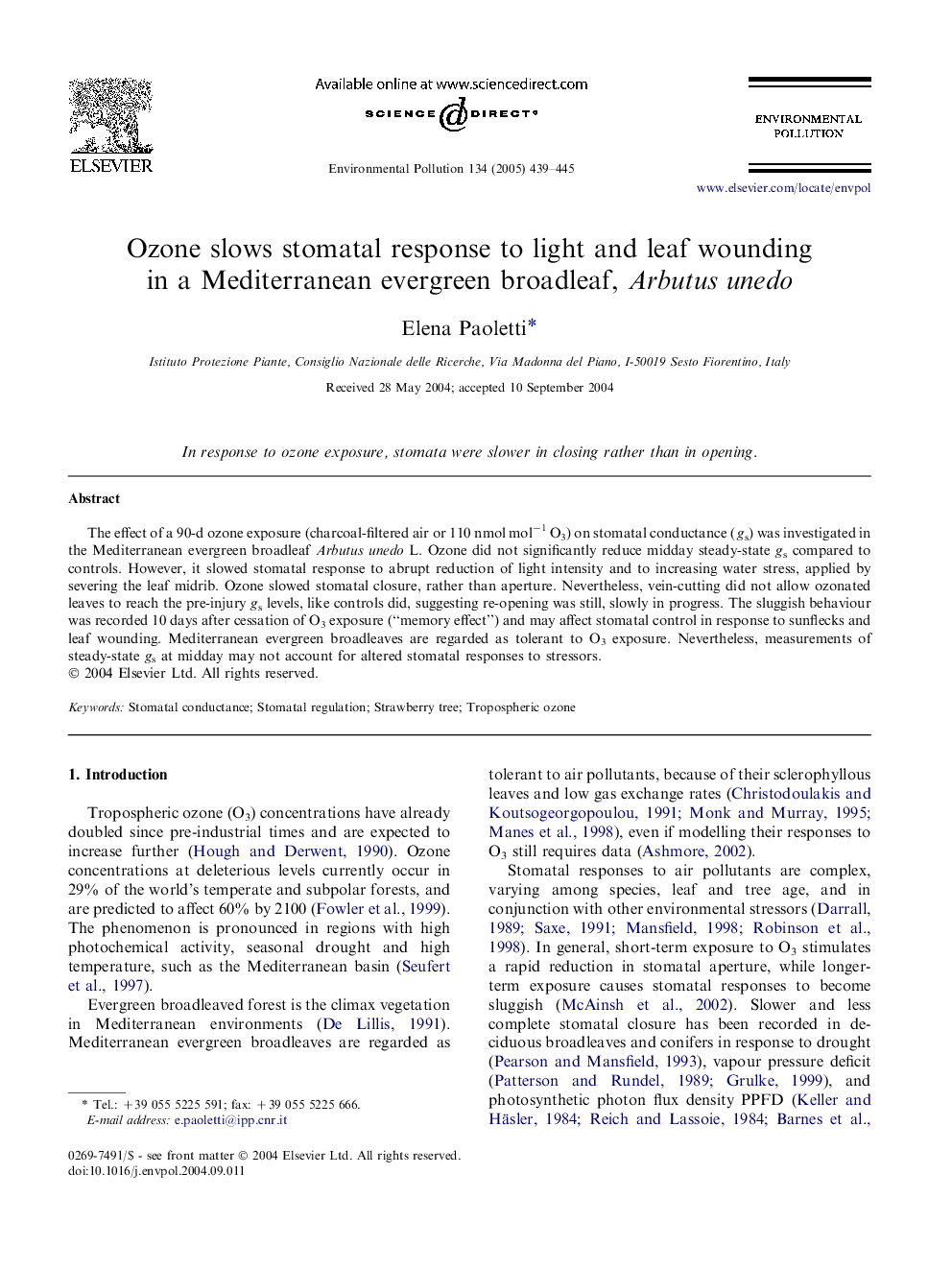| Article ID | Journal | Published Year | Pages | File Type |
|---|---|---|---|---|
| 9456445 | Environmental Pollution | 2005 | 7 Pages |
Abstract
The effect of a 90-d ozone exposure (charcoal-filtered air or 110 nmol molâ1 O3) on stomatal conductance (gs) was investigated in the Mediterranean evergreen broadleaf Arbutus unedo L. Ozone did not significantly reduce midday steady-state gs compared to controls. However, it slowed stomatal response to abrupt reduction of light intensity and to increasing water stress, applied by severing the leaf midrib. Ozone slowed stomatal closure, rather than aperture. Nevertheless, vein-cutting did not allow ozonated leaves to reach the pre-injury gs levels, like controls did, suggesting re-opening was still, slowly in progress. The sluggish behaviour was recorded 10 days after cessation of O3 exposure (“memory effect”) and may affect stomatal control in response to sunflecks and leaf wounding. Mediterranean evergreen broadleaves are regarded as tolerant to O3 exposure. Nevertheless, measurements of steady-state gs at midday may not account for altered stomatal responses to stressors.
Related Topics
Life Sciences
Environmental Science
Environmental Chemistry
Authors
Elena Paoletti,
